Sling is an important part of the hoist to afford heavy lifting. There are various sorts of slings that are commonly used. Choosing the right slings for your specific needs.
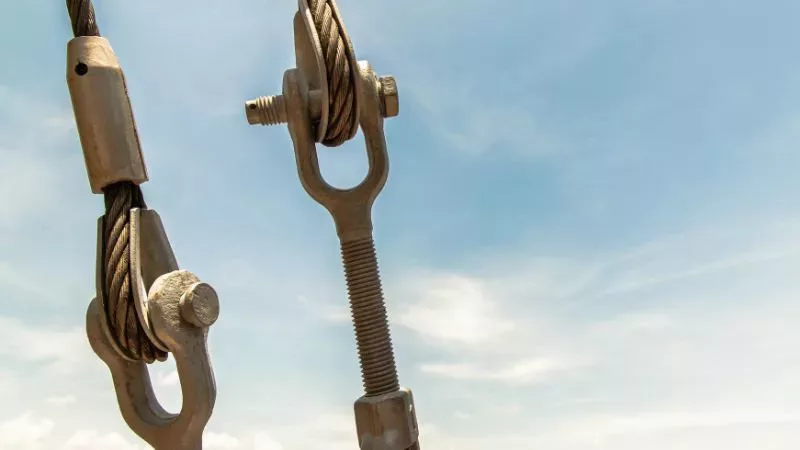
Types and of Slings
Slings made of different materials are used for different purposes. When selecting the right lifting sling for our needs, consider factors like load weight, material type, and environmental conditions to ensure safe and effective operation.
Chain Slings
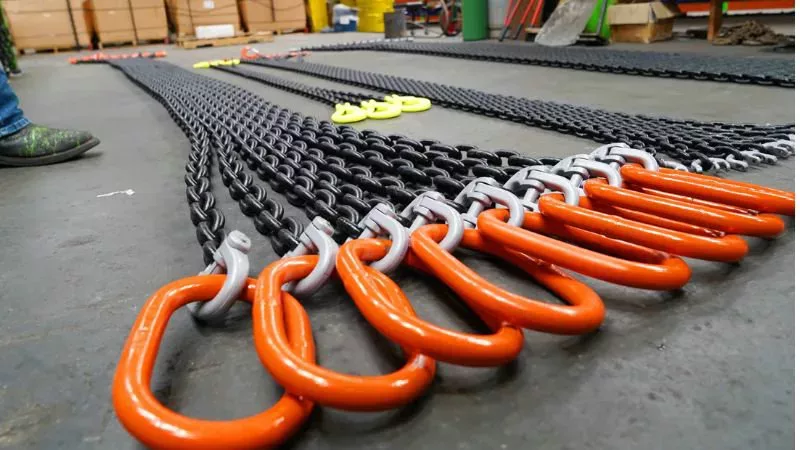
Chain slings, or stand slings, typically made from alloy steel, provide high strength and durability. They are ideal for handling heavy loads and withstanding rough conditions without suffering from fatigue. Using chains to pull heavy loads, they are particularly valuable for lifting operations that require resistance to abrasion and heat.
Advantages:
- High-strength, durable, flexible design for harsh environments
- Completely repairable by replacing links
- Easy to inspect, proof-test, and re-certify if repaired
- It can be used at high temps and hazardous environments
- Resistant to corrosion, chemicals, UV exposure
- Superior load-bearing and wear resistance vs other slings
Disadvantages:
- Very heavy, especially for higher capacities
- More expensive than wire rope or synthetic slings
- Can easily damage or crush sensitive parts
Wire Rope Slings
Wire rope slings are constructed with wire ropes, known for their versatility and strength. These slings are well-suited for various lifting applications, offering good flexibility, abrasion resistance, and the ability to withstand demanding environments.
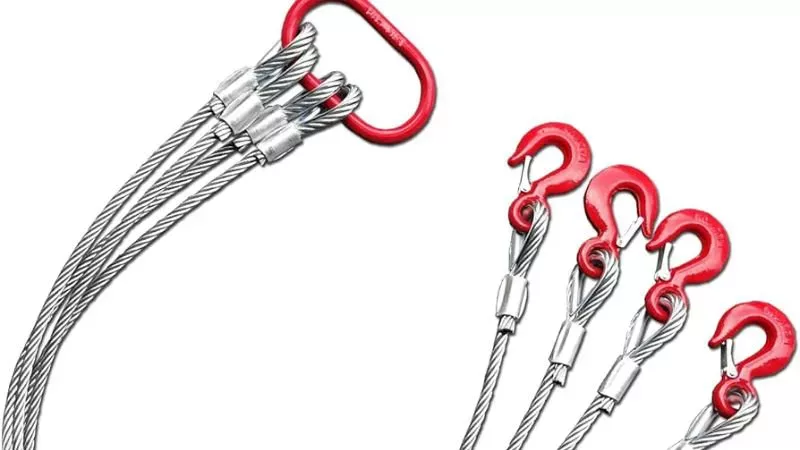
Advantages:
- Lower initial cost and lighter in weight than alloy chain slings
- High strength and flexibility in a smaller diameter design
- Different designs provide strength, flexibility, abrasion/fatigue/corrosion resistance
- high temperature resistant, and not easy to break
Disadvantages:
- Low strength-to-weight ratio
- Construction can make it difficult to inspect
- Misuse can cause kinking, crushing, abrasion, and loss of strength
- Not repairable, must be destroyed and disposed of if damaged
- Can damage loads due to friction
- Not suitable for flammable/explosive areas
Round Sling
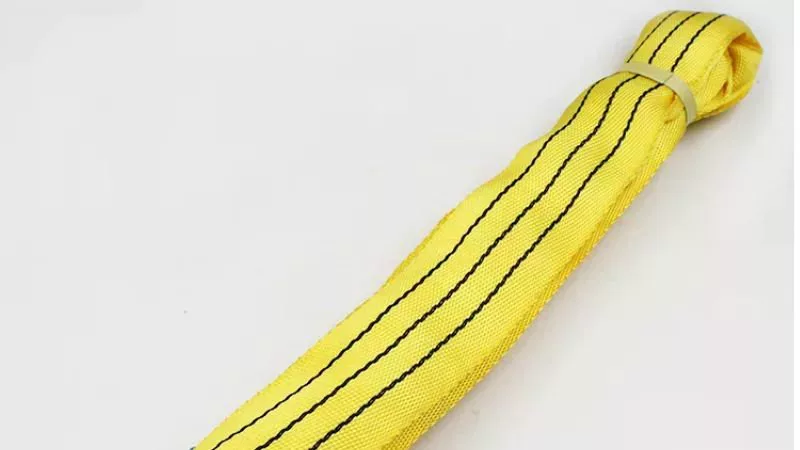
Round slings are a form of synthetic sling characterized by their round shape, made from strong polyester fibers. Providing a firm grip, they are excellent for securing and lifting circular or cylindrical objects while minimizing damage to the load.
Advantages:
- The outer cover protects the internal yarn from abrasion, grease, and UV rays
- Easy to inspect for physical damage
- Offers protection of delicate loads
- Perfect for lifting round loads such as tubes or piping (especially in choker hold)
Disadvantages:
- Must be stored in a cool, dark place to protect from UV damage
- Susceptible to heat damage
- Have a lower stretch rate and lifting capacity compared to web slings
Webbing Sling
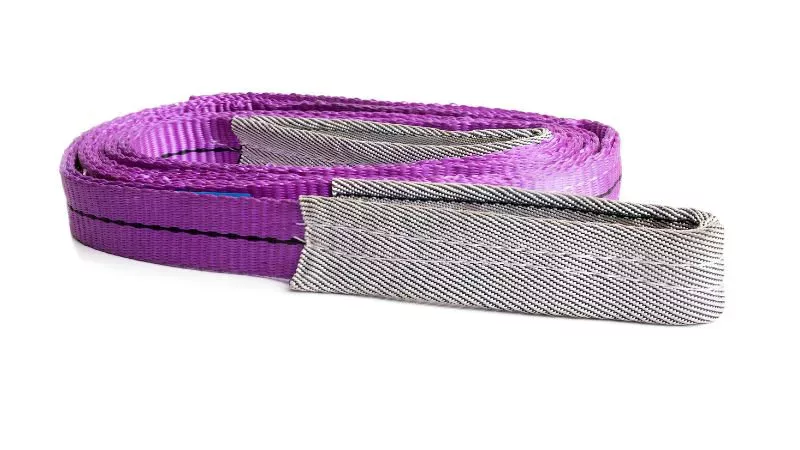
Webbing slings, crafted from materials such as polyester or nylon, offer flexibility and are gentle on delicate loads. These slings are lightweight and efficient, with their flat surface area spreading the load to avoid cutting or indentation.
Advantages:
- Not expensive
- Flexible and easily wraps around almost any shape load
- Tightly secures and protects delicate loads from scratches or damage
- Lightweight and easy to handle with a high strength-to-weight ratio
- Resistant to certain chemicals like grease, oil, and moisture
Disadvantages:
- Poor abrasion and cut resistance compared to other sling types
- Requires padding to be used on corners and rough surfaces to prevent damage
- Low heat resistance, with temperatures above 180°F damaging nylon and polyester slings
- Wet or frozen slings will have a reduced working load limit
- Susceptible to UV damage over long exposure and must be stored in a cool, dry, dark place
Synthetic Slings

Synthetic slings, which encompass round and web slings. Polyester slings and Nylon slings are both included. They are suitable for lighter loads and applications where a softer touch is needed, such as where the load surface might be compromised by more abrasive sling types.
Advantages:
- Very cheap and lightweight
- Flexible, easily wraps around almost any shape
- Tightly secures and protects delicate loads
- High strength-to-weight ratio
Disadvantages:
- Relatively low heat-resistance
- Poor abrasion and cut resistance may require padding
- UV susceptible, must be stored in a cool, dry, dark place
Endless Webbing Sling

Endless webbing slings, made from continuous loops of polyester fabric, are versatile lifting tools. Reversible for even wear, they are well-suited for choking applications and can adapt to various shapes and sizes of loads.
Advantages of endless webbing slings:
- The outer cover protects the internal load-bearing yarns from abrasion, grease, and UV rays
- Easy to inspect for physical damage
- Offer good protection for delicate loads
- Perfect for lifting round loads such as tubes or piping, especially in a choker hitch
- Versatile, lightweight, and easy to work with
Disadvantages of endless webbing slings:
- Must be stored in a cool, dark place to protect them from UV damage
- Susceptible to heat damage
- Have a lower stretch rate and lifting capacity compared to flat web slings
- It may crease and damage the load if wrapped directly without specific lifting points like a shackle
Metal Mesh Slings
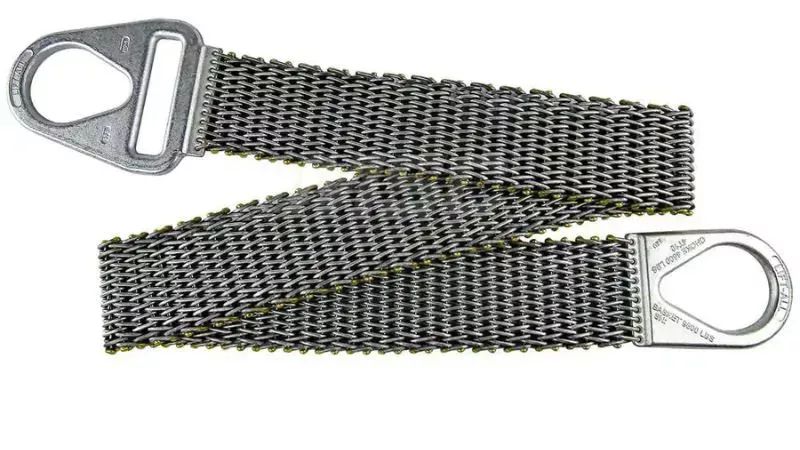
Metal mesh slings are robust and maintain their shape under heavy loads. Their interwoven metal mesh construction provides breathability and flexibility, which is beneficial when gripping irregularly shaped loads. They also exhibit impressive durability in harsh environments.
Advantages:
- High-strength and durable design protects against corrosion, abrasion, and cutting
- It can be used in metalworking and other high-heat and demanding environments
- Flexible design with a wide bearing surface that can firmly grip irregular loads, similar to synthetic slings
- Extremely resistant to abrasion and cutting
- Provide the widest standard bearing surface of any rigging sling, offering top load securement and balance
Disadvantages:
- When one wire is broken, the entire sling needs to be removed and replaced for a new one
- Metal mesh slings can be subjected to crushing damage
- Lack of flexibility due to distortion of the mesh
- Distortion of the choker fitting so that the depth of the slot is increased by more than 10 percent
- It cannot be used for loads heavier than the safe working load limit
- Should not be used in pairs unless vertically attached to a spreader bar
